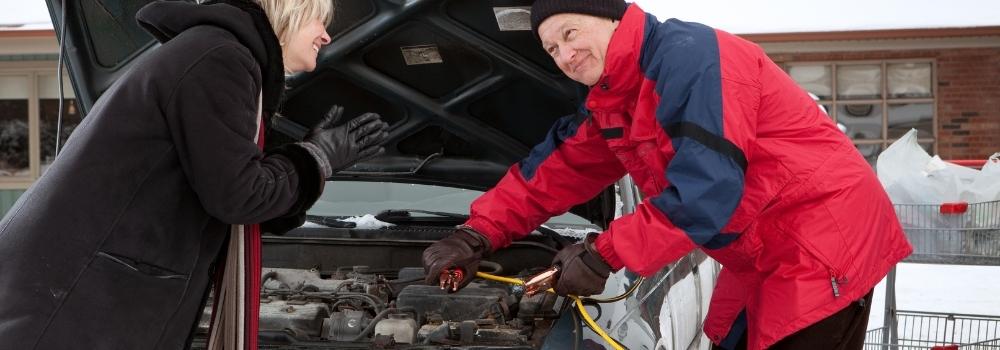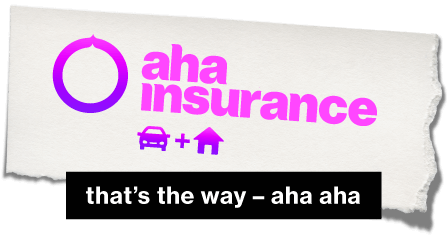We all love our cars… until we don’t. Few things are more annoying and inconvenient that having a simple breakdown, especially if you don’t know how to boost a battery or cover similar issues. Cars may be more technologically advanced than ever before, but that doesn’t mean they still don’t break down. Despite all the diagnostic tools and warning signals, roadside emergencies have never occurred more frequently.
It pays to learn how to handle the simpler car crises that can ruin your whole day and avoid having to call the dreaded (and expensive) roadside assistance. These are the three most common emergency car maintenance tips you should know out on the road.
1) How to boost a battery
Left the lights on? Don’t get stranded by a dead battery. Follow these steps to learn how to boost a battery with the help of a helpful stranger or friend, their car, and jumper cables:
- Turn off the ignition and electrical components in both vehicles.
- Connect the positive jumper clamp (It’s the red one, usually) to the donor car’s remote positive terminal. Look in the owner’s manual to find out where it is located. If you can’t find them, connect to the positive (+) battery terminal. Do the same for the car with the dead battery.
- Connect the negative jumper clamp (It’s the black one) to the dead car’s remote negative terminal. Again, look in the manual for this. Do the same for the donor vehicle. Important: If you can’t find the remote terminals, you shouldn’t connect the jumper to the negative terminals of the batteries. This could cause something nasty to happen that makes a “boom” sound. Instead, connect the clamps to any clean and unpainted metal surface you can find in the engine compartment at least 45 cm from the battery.
- Start the donor car and let it charge the dead battery for five minutes. Try to start the dead car with the cables still in place. If it doesn’t start, it’s really dead, and you have to call for service.
Be warned: connecting jumper cables in the wrong order or attaching them to the wrong parts can damage a car’s electrical components and even cause an explosion. Also, batteries can vent hydrogen when they are discharging, so do not smoke while this is happening!
2) How to get unstuck
Before you call a tow truck to get your car out of a rut or deep snow, there’s a simple trick you can perform to try getting yourself free.
If you have an automatic, start by putting the car in first gear (1), or “low.” Gently press the accelerator to move the car forward. Once it’s moved, even slightly, let off of the gas allowing the vehicle to roll backward. Once, rolling backwards, immediately then hit the gas again to get it rocking back and forth. Continue this rocking motion until you have enough momentum to get out of there.
Be warned: It’s important that you don’t shift between drive and reverse as this can severely damage your transmission. If you’re unable to rock back and forth, then it’s time to call for a tow.

3) How to change a tire
Changing a tire is straightforward if you have the necessary tools, and much easier than learning how to boost a battery. Here’s what to do the step-by-step:
- If you are driving and feel a flat coming on, find a safe location, pull over and turn on your hazard lights.
- Apply the parking brake and, if you have them, wheel wedges to ensure the car doesn’t roll away.
- If your lug nuts aren’t exposed, use the flat head screwdriver in your tire changing kit to remove the wheel cover (or hook tool) to remove the hubcap.
- Loosen (but do not remove) the lug nuts with your lug wrench.
- Check your manual, and place the jack under your vehicle in one of the safe jacking points, and raise it until the tire is 10 cm above the ground.
- Unscrew the lug nuts and remove the bad tire.
- Mount the spare tire and replace the lug nuts by hand.
- Lower the jack until the spare just touches the ground. Tighten the lug nuts with the lug wrench and replace the hubcap.
- Lower the vehicle completely and check the spare tire’s pressure to make sure it’s safe.
- Take your damaged tire to a mechanic for repair or replacement.
Be warned: If you have to stop for a flat tire on the highway or a narrow street and it’s on the driver’s side, the risk of being hit while changing it is very high and not at all worth the risk. Call for roadside assistance instead.
Don’t get stuck on the road if you don’t have to
Those are just a few tips to keep yourself rolling down the road if something bad happens. But you can avoid most of these by keeping up with your regular service like oil changes and keeping your tires properly filled. Don’t ignore warning lights when they come on, either. There are a lot of them, but if they are on, then something needs to be checked out.
We hope this helped you learn how to boost a battery and how to fix other common car troubles. Happy travels!






